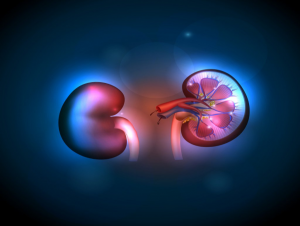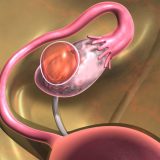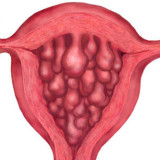Kidney cyst is the disease characterized by the appearance of cavities filled with fluid in the tissues of a kidney. They are classified by location, type and number of formations. Simple kidney cyst is one of the most common focal kidney lesions.
Ultrasound is the main method of assessing the state of the kidney and diagnosing kidney cysts. After disease detection the doctor must decide what treatment to choose. This largely depends on the type of kidney cyst – simple or complex.
A simple cyst or pseudocyst in most cases does not need special treatment, especially in the absence of symptoms. Often simple kidney cysts gone themselves.
Kidney cyst diagnosis
Ultrasound examination is the main method of primary kidney cyst diagnosis. The medical equipment is characterized by high sensitivity, allowing to detect changes from 5 mm in diameter.
However, the picture of cystic kidney changes visualized on medical ultrasound can often be the same for kidney cysts of different kinds, with different clinical course. In other words, when detecting a kidney cyst on ultrasound, additional examination is necessary to make an accurate diagnosis. Because treatment largely depends on it. Whether it will consist of tracking the dynamics of the kidney cyst development, or whether surgical intervention is required.
Simple kidney cyst
Simple kidney cyst – the most common cystic renal disease. It takes more than 90% of all cystic kidney lesions. Fortunately, it is a benign formation.
A simple cyst can easily appear and develop at any period of life. Medical data show that the incidence of the disease increases in proportion to the age of the risk group. In addition, the size of the cystic education more in older people. Thus, they are found in more than half of the population over 50 years.
A simple kidney cyst can occur as a single cavity, and be multiple formations. The cysts can occur on one side or both.
Simple kidney cysts in most cases remain clinically silent. That is, they are asymptomatic until they reach a sufficiently large size.
The solution for the treatment of large cysts with manifested symptoms is usually surgical. In this case, procedures with low invasiveness are used. However, simple kidney cysts do not always grow.
Simple kidney cyst classification
A simple kidney cyst can develop in any part of the organ.
But there is a tendency of the most frequent distribution in the lower part of a kidney. Less often, a simple kidney cyst is formed in the upper or middle part of the kidney.
Simple cyst kidneys rarely develop inside or near the cavity. By location, simple renal cysts can be divided into:
- central cysts – located in the central part of a kidney
- parenchymal cysts – located in the parenchymal layer of the kidney
- regional cyst originating from the parenchymatous layer, but located mostly on the kidney
- cavity cysts – located in the renal cavity
Simple kidney cyst on ultrasound
A simple cyst is currently the only focal kidney lesion that can be diagnosed as benign during ultrasound examination. It is characterized by a spherical or oval shape, a thin smooth wall, without solid elements, without calcification and partitions, with acoustic amplification behind the back border.
In ideal imaging conditions, a simple cyst is an anechoic change. This means that at the maximum amplification of the ultrasonic wave, the reflection of the ultrasonic wave from the inner part of the cyst is not observed.
However, daily clinical practice shows that with careful observation, renal cysts are rarely completely devoid of internal echo. This is due to the artifacts created by the propagation of the ultrasonic wave through the tissues.
Difficulties in diagnosis
Simple kidney cysts usually do not cause serious difficulties in ultrasound diagnosis or other medical examinations. Basically, if there are problems with their detection, it is due to the small size of the cysts, when the sensitivity of the medical device is not enough to detect them.
A more serious problem for simple kidney cyst diagnosis is the absence of symptoms or their extremely weak severity. In addition, the symptoms that occur with the development of the disease and the increase in the size of the cyst are nonspecific. Therefore, it is not immediately clear what organ is ill and what examination to start.
Very large edge-located cyst that are between the organs may raise doubts about what organ is diseased. This also makes it difficult to make a diagnosis, because perhaps the cyst is on a nearby organ, and just presses the kidney.














